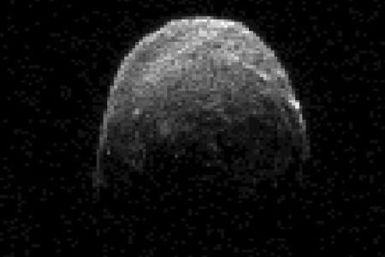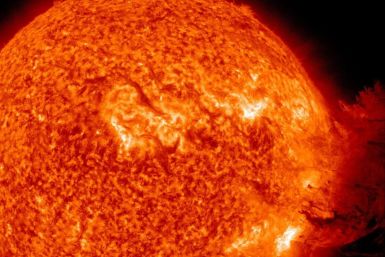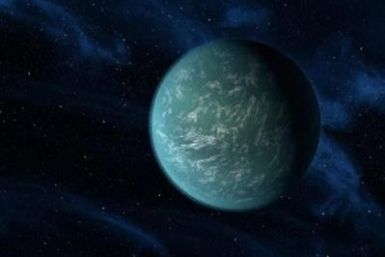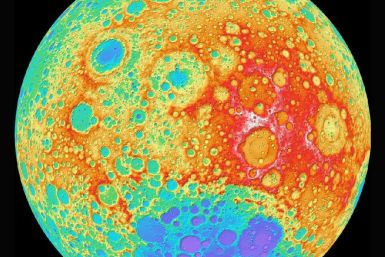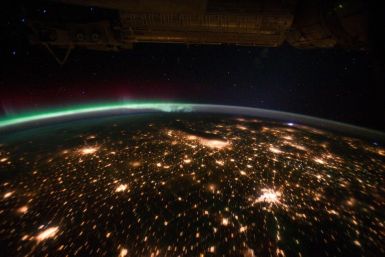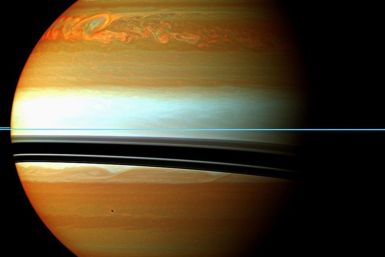A NASA rover scouting for signs of past water on Mars has found the strongest evidence yet -- a vein of gypsum, a mineral deposited by water, protruding from an ancient rock.
A NASA rover scouting for signs of past water on Mars has found the strongest evidence yet -- a vein of gypsum, a mineral deposited by water, protruding from an ancient rock.
A sliver of mineral deposits left over from ancient water flows has been discovered on Mars by NASA's Mars Exploration Rover Opportunity, researchers said Dec. 7. The bright vein of mineral appears to be gypsum and is about an inch wide by 18-inches long.
About 1,000 asteroids big enough to cause catastrophic damage if they hit Earth are orbiting relatively nearby, a NASA survey shows.
As our sun churns out massive amounts of energy, it sometimes belts out enough solar wind to literally sandblast the surface of the Moon. NASA scientists have used a model of the effects of coronal mass ejections -a gargantuan type of sun storm- to determine that such events can blow the equivalent of 10 dump truck loads of dust right off the Moon's surface and into space.
The recent discovery of an apparently inhabitable blue planet, Kepler 22-b, orbiting a star similar to the Sun, by NASA's Kepler Mission, has persuaded the Search for Extra Terrestrial Intelligence (SETI) to advance its activities to verify the probabilities of spotting alien life forms on its surface.
Santa Claus has brought an early Christmas gift to the earthlings - NASA has discovered an Earth-like planet outside our solar system whose distance from its on star makes it "habitable."
NASA scientists believe they are a step closer to finding Earth-like planets, following the discovery of the new planet, Kepler-22b. The space agency said that the new planet has many similarities to planet Earth and that there is the possibility that water exists on Kepler-22b's surface
A NASA probe that has been visiting an asteroid since July has recorded images scientists say is proof the asteroid has a mineral make up more like that of Earth or Mars than a typical asteroid. Images from the Dawn space probe show differences in rock composition on the Vesta asteroid that are evidence of it's transition from asteroid to terrestrial-like planet.
NASA's planet-hunting Kepler spacecraft has confirmed the existence of a planet that is 600 light years away that could possibly have water on its surface.
The most Earth-like planet ever discovered is circling a star 600 light years away, a key finding in an ongoing quest to learn if life exists beyond Earth, scientists said on Monday.
Recent Space Pictures Released by NASA: A New Map of Moon and First Supernova Companion Star [PHOTOS]
NASA is commissioning a new washing machine design that could mean astronauts get a clean change of underwear every day. An energy and water-efficient machine on board the International Space Station (ISS) could save astronauts from enduring the stench of their garments and having to send them out into the atmosphere to be incinerated.
An unmanned Atlas 5 rocket blasted off from Florida on Saturday, launching a $2.5 billion nuclear-powered NASA rover toward Mars to look for clues on what could sustain life on the Red Planet.
An unmanned Atlas 5 rocket blasted off from Cape Canaveral Air Force Station in Florida on Saturday, launching a $2.5 billion nuclear-powered NASA rover toward Mars to look for life habitats there.
This year three station crew members, one American and two Russians, will celebrate Thanksgiving with freeze dried turkey in silver packages out in space.
The Cassini spacecraft orbiting Saturn has sent high-resolution images, which includes those of a 'monstrous-giant storm,' which stayed alive for 200 days on the northern part of Saturn.
NASA plans to launch its next-generation Mars rover, the Curiosity, to scope out the red planet in a highly-anticipated liftoff scheduled for Saturday.
Scientists have picked up a signal from Russia's Phobos-Grunt spacecraft, the European Space Agency said Wednesday. The craft was launched earlier this month, but scientists soon lost contact with it.
Taken the High Line Park? Now you can try the undergound Low Line, at least if a NASA and Google pair get their way.
NASA's Lunar Reconnaissance Orbiter (LRO) science team has released the highest resolution near-global topographic map of the Moon ever created.
But as Janet Kavandi, NASA flight crew operations director, said,” The experience is well worth the wait.”












